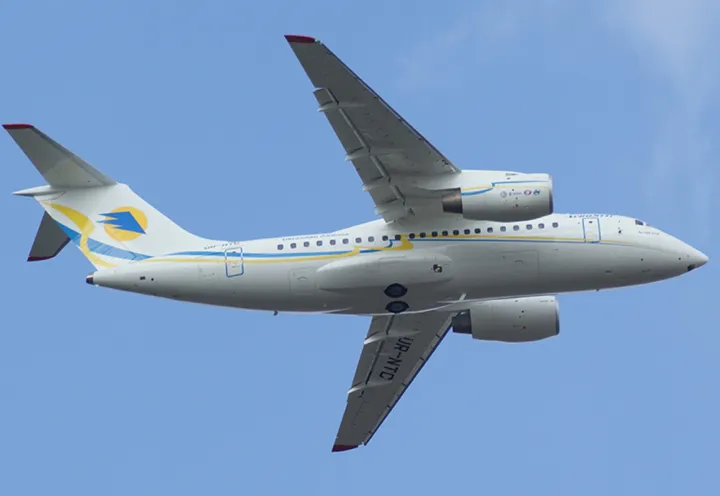
Russian AN-148 crash - 71 dead
Feb 11, 2018

In February 2018, a tragic crash involving a Russian AN-148 aircraft occurred shortly after takeoff from Domodedovo International Airport in Moscow. The plane, operated by Saratov Airlines, was en route to Orsk when it lost contact with air traffic control and went down in a snowy field near the village of Stepanovskoye. All 71 people on board, including passengers and crew, perished in the disaster. Investigations revealed potential issues with the aircraft's systems and weather conditions at the time of the flight, highlighting concerns about aviation safety in the region. This incident marked one of the deadliest aviation disasters in Russia in recent years.
Overview of the Russian AN-148 Crash
The tragic crash of the AN-148 aircraft in Russia resulted in the loss of 71 lives, sparking widespread media coverage and public concern. This incident emphasized the importance of safety in aviation and highlighted the need for stringent regulations and oversight in the airline industry. The "AN-148" was a twin-engine regional jet, and its unexpected demise raised questions about the aircraft's operational history and maintenance practices.
Key Details of the Incident
On February 11, 2018, the AN-148, operated by Saratov Airlines, took off from Moscow's Domodedovo Airport en route to Orsk. Shortly after takeoff, the aircraft experienced a loss of altitude and communication with air traffic control. Unfortunately, it crashed in the Ramenskoye District of the Moscow region, leading to the tragic loss of all passengers and crew on board.
The following table outlines the key details surrounding the "AN-148 crash":
| Detail | Description |
|---|---|
| Date | February 11, 2018 |
| Aircraft Type | AN-148 |
| Operator | Saratov Airlines |
| Flight Route | Moscow to Orsk |
| Casualties | 71 (all on board) |
Investigative Findings
The investigation into the "AN-148 crash" was conducted by the Interstate Aviation Committee (IAC). Preliminary findings indicated several contributing factors. The "flight data recorder" and "cockpit voice recorder" were recovered, providing crucial insights into the events leading up to the crash.
One of the significant findings was related to the aircraft's "autopilot system". It was determined that there may have been issues with the aircraft's automatic systems, coupled with potential pilot error during the critical flight phase. The investigation emphasized the need for comprehensive training for pilots, particularly in handling emergency situations.
Aviation Safety Measures
This tragedy has led to increased scrutiny regarding aviation safety regulations in Russia and worldwide. Following the "AN-148 crash", regulatory bodies have been urged to enforce stricter guidelines for aircraft maintenance and pilot training. In response to the incident, the Russian government announced plans to enhance safety measures, including:
- Regular audits and inspections of airlines
- Mandatory retraining for pilots on emergency protocols
- Increased transparency in reporting maintenance records
Global Reactions
The "AN-148 crash" resonated beyond Russia, prompting reactions from international aviation organizations and governments. Many expressed condolences to the victims' families and emphasized the need for a global standard in aviation safety practices. The aviation community has since rallied to improve protocols and share best practices across borders.
Remembering the Victims
In the aftermath of the crash, memorial services were held for the victims, which included a mix of families, students, and professionals. The loss of 71 lives serves as a somber reminder of the importance of safety in air travel.
Conclusion
The "Russian AN-148 crash" of 2018 is a pivotal moment in aviation history that highlights the critical need for ongoing improvements in safety protocols and pilot training standards. As investigations continue and lessons are learned, the hope is that such tragedies can be prevented in the future, ensuring that air travel remains one of the safest modes of transportation available.
Further Reading
For those wishing to delve deeper into the specifics of aviation safety and incidents similar to the "AN-148 crash", consider exploring resources provided by the International Civil Aviation Organization (ICAO) and the Federal Aviation Administration (FAA). These organizations offer comprehensive data on aviation incidents and safety regulations that can provide valuable insights for industry professionals and the general public alike.
Related Articles

Explore Thailand: The Best Islands to Visit for Paradise, Adventure, and Relaxation

The Ultimate Guide to the Best Islands in Thailand for Your Next Getaway

Do babies need passports? How to get a passport for a newborn

How to get a U.S. passport fast: here’s how to expedite the process

What is Mobile Passport Control: 5 reasons why you should use it

SENTRI vs. Global Entry: A detailed guide

Do you need a passport to go to the Bahamas? Let’s find out

Do you need a passport to go to Mexico? A detailed guide

Do you need a passport to go to Canada? We got the answer

Do You Need a Passport for a Cruise: An Essential Travel Guide

Booster Seat Requirements: All the Rules to Follow in Your Rental Car

What Are the World’s Most Powerful Passports, and How Does Yours Rank?

How to Take a Passport Photo at Home: A Helpful Guide

You've got to have heart! Southwest's new livery

Your opinion: Should water be free on low cost carriers?

Young women bolder than guys as solo travellers
